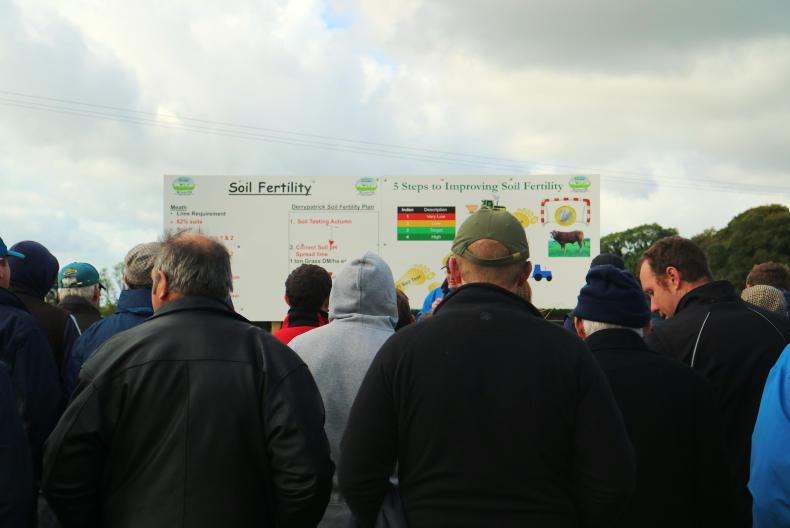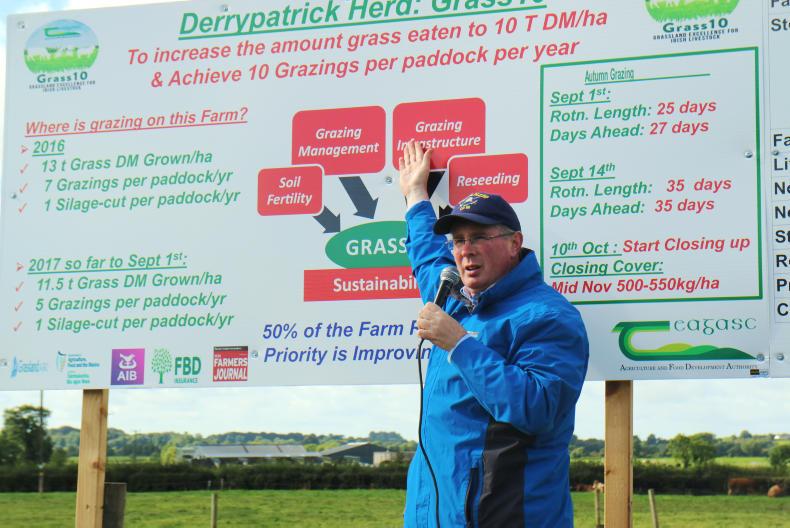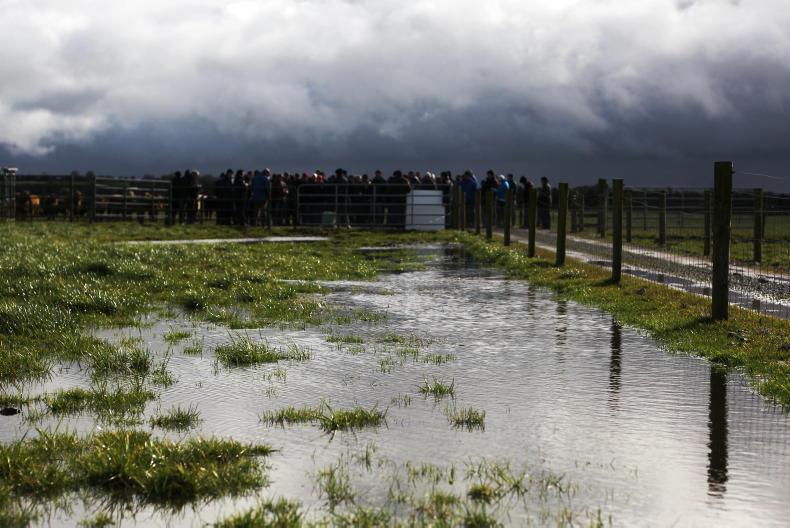“Grass 10 is about making you braver as grazers…”
These were the words of Teagasc’s Grass 10 programme coordinator John Maher at Teagasc Grange’s Derrypatrick grass walk on Wednesday.
The Grass 10 initiative is pushing farmers to graze paddocks 10 times a year and utilise 10t of dry matter in the process.

Current averages are closer to half of both these figures on Irish drystock farms and every extra tonne of grass utilised on these farms is worth €105/ha in additional net profit.
At Teagasc Grange for the Derrypatrick Grass10 walk - going soft! Good messages pic.twitter.com/kcu4ienSIm
— FJ Beef (@FJBeef) September 13, 2017
Lead Derrypatrick researcher, John Heslin provided patrons with a breakdown of the 100-cow herd’s grassland performance in 2017 to date.
“We’ve grown 11.5t of grass per hectare (65ha) to date and had six grazings on each paddock including one silage cut.
“This is a bit behind on the target but we had a difficult spring and while the grass was there to get out early, it was April before we got grazing seriously,” he said.
Heslin said he is currently grazing heavier covers in an effort to build up grass covers for the autumn period.
“We’re gradually building up to 35 grazing days ahead by this weekend. We’re grazing heavier covers to achieve this and this is okay as grass won’t head out and lose its quality at this time in the year.
“We’re going into 11.5cm covers at the moment (2000kg DM/ha),” he said.
The message at this and all of the recent grass walks is clear. Grass for February is grown in October.
Drystock farms absolutely must begin closing paddocks up in early-October if they are to have any chance of early-grazing.
“We’ll start here from the 5 October and aim to have 60% shut by 1 November,” Heslin said.
Teagasc B & T advisor John Kelly told attendees to close the paddocks around their yards first.
“These are the first ones you’ll be going to with stock in the spring, like cows and calves or light yearlings,” he said.

John Maher also made a valid point about spring urea.
“We get a great response to urea in the spring, provided conditions are right. If you start closing up paddocks in November, you won’t have any covers in the spring and when you go with your urea on these bare paddocks you’re open to big N-losses,” he said.
Derrypatrick has reseeded 50% of the farm with Chieftan and Aberherald clover varieties this year and the herd will be split into two in 2018 – clover and non-clover animals – to evaluate the effect of white clover on beef farm profitability.






 This is a subscriber-only article
This is a subscriber-only article













SHARING OPTIONS: